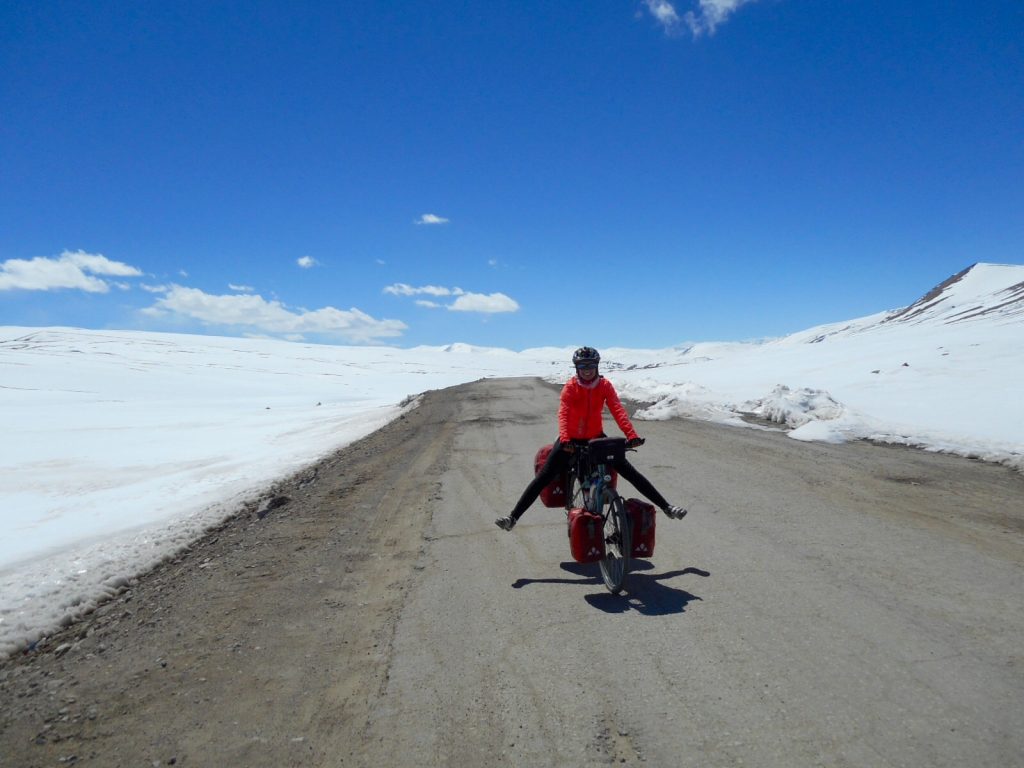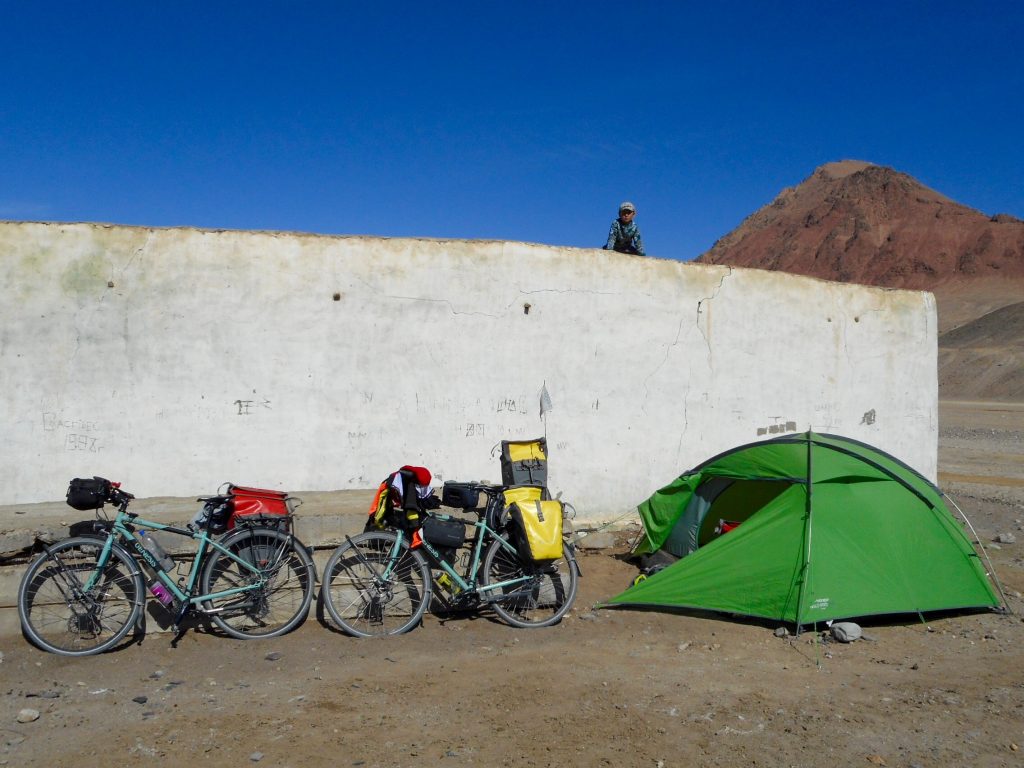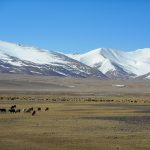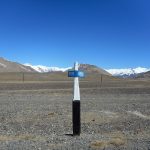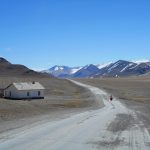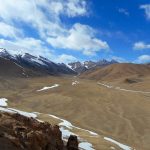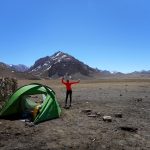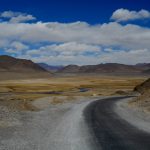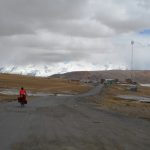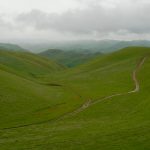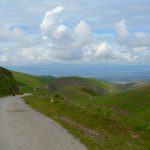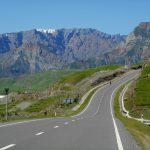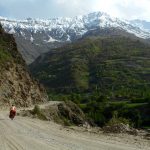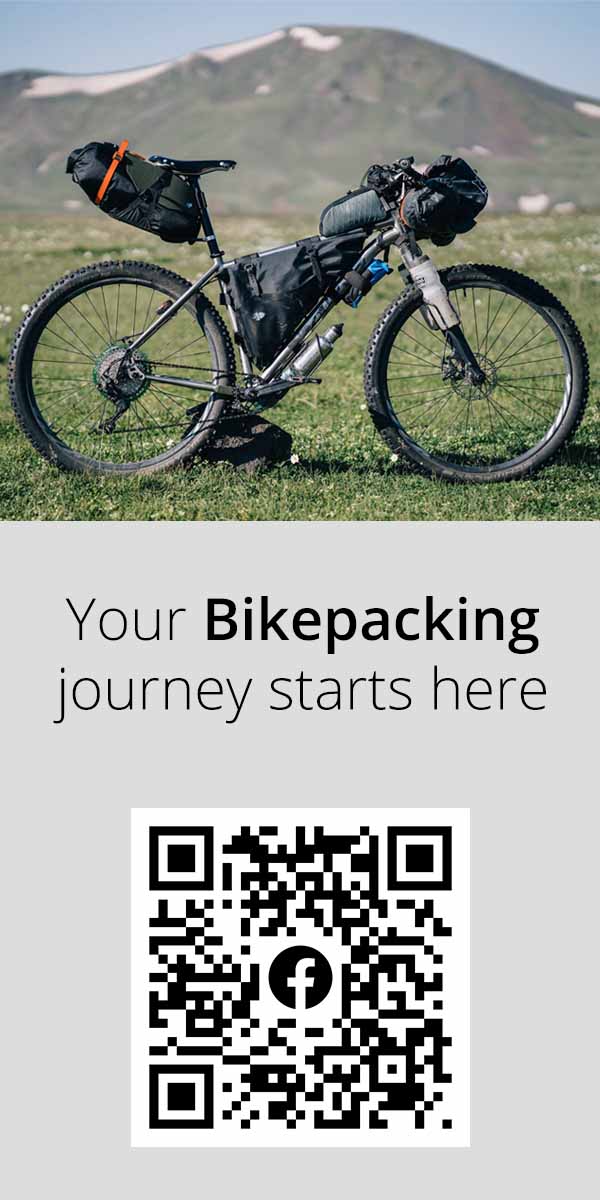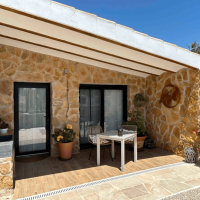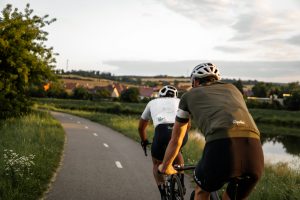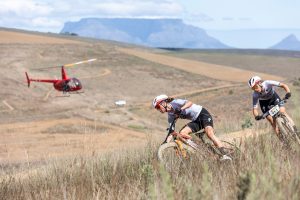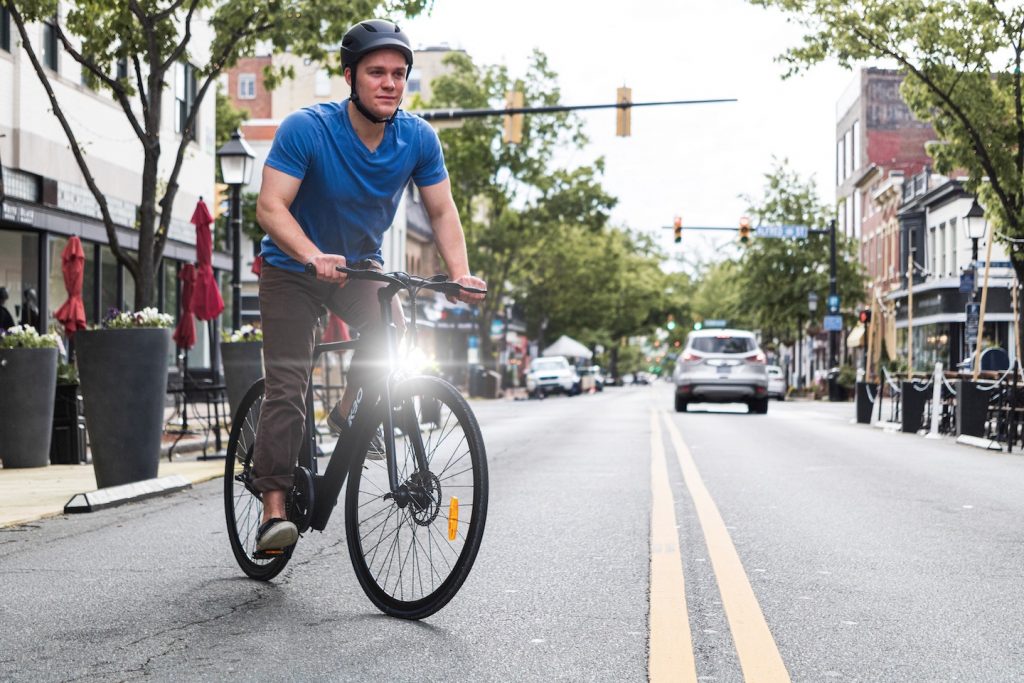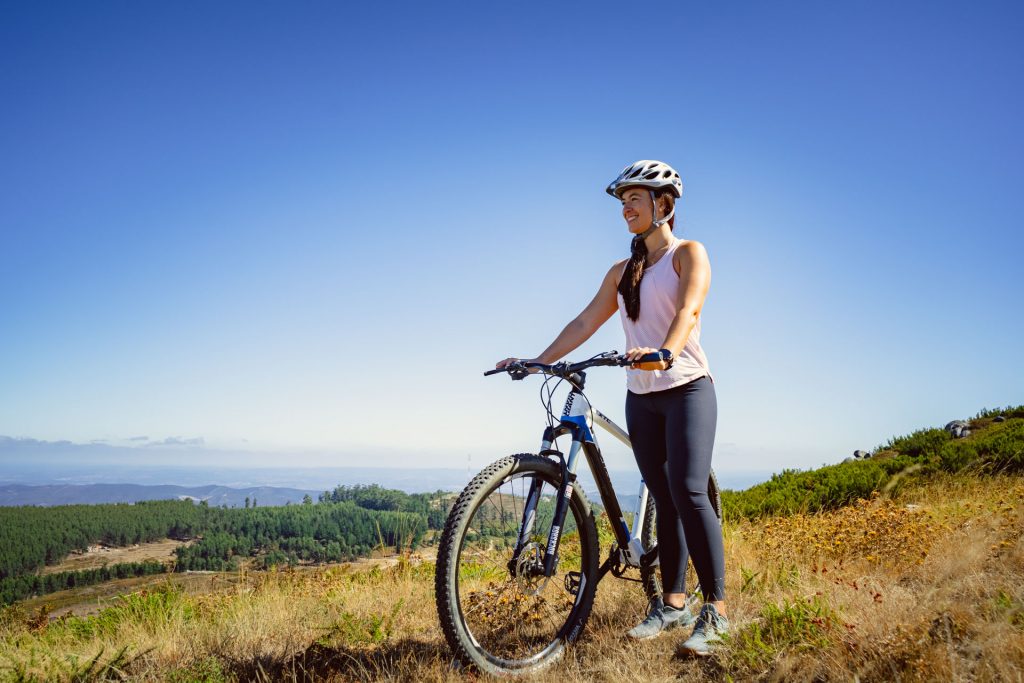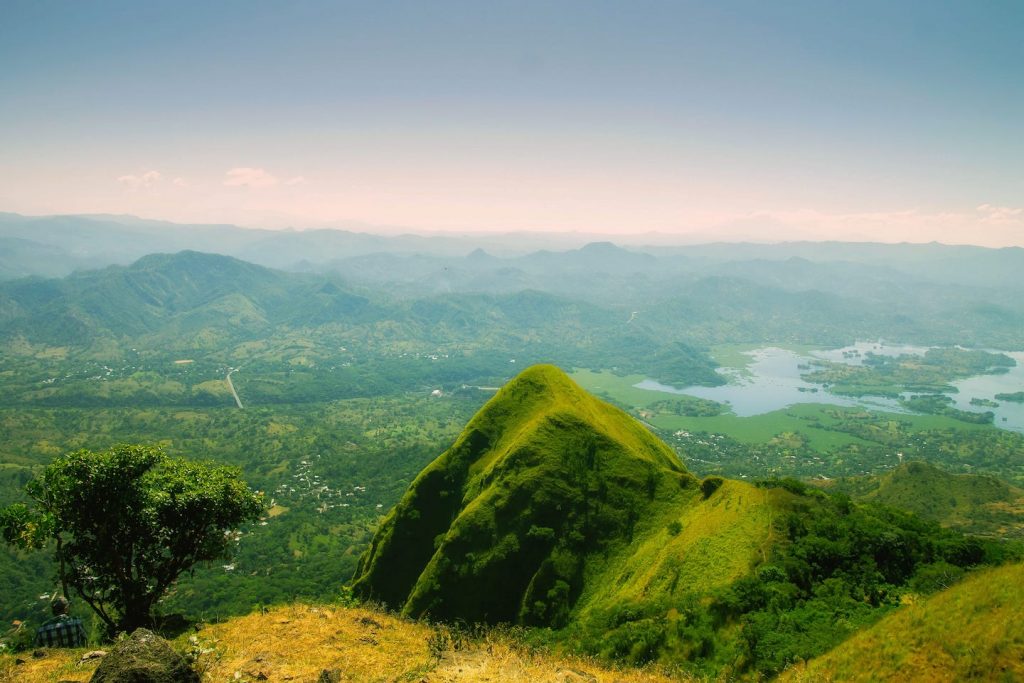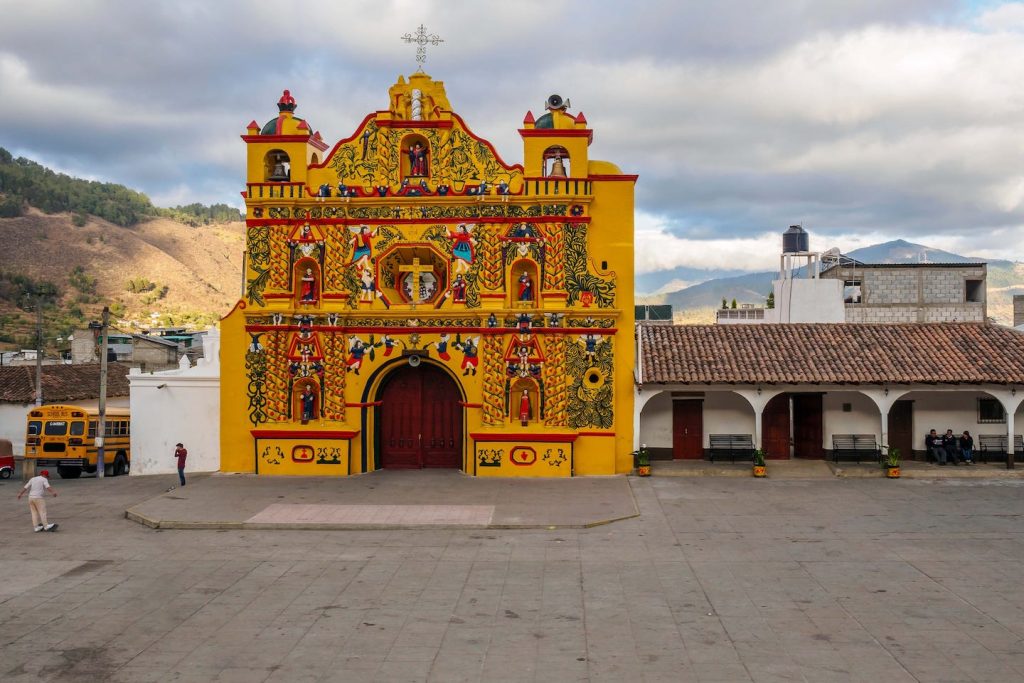Cycling the Pamir Highway (Tajikistan) – Amazing sceneries and a solitary road which takes you up one of the highest cyclable places on Earth, but is that really all there is to it?
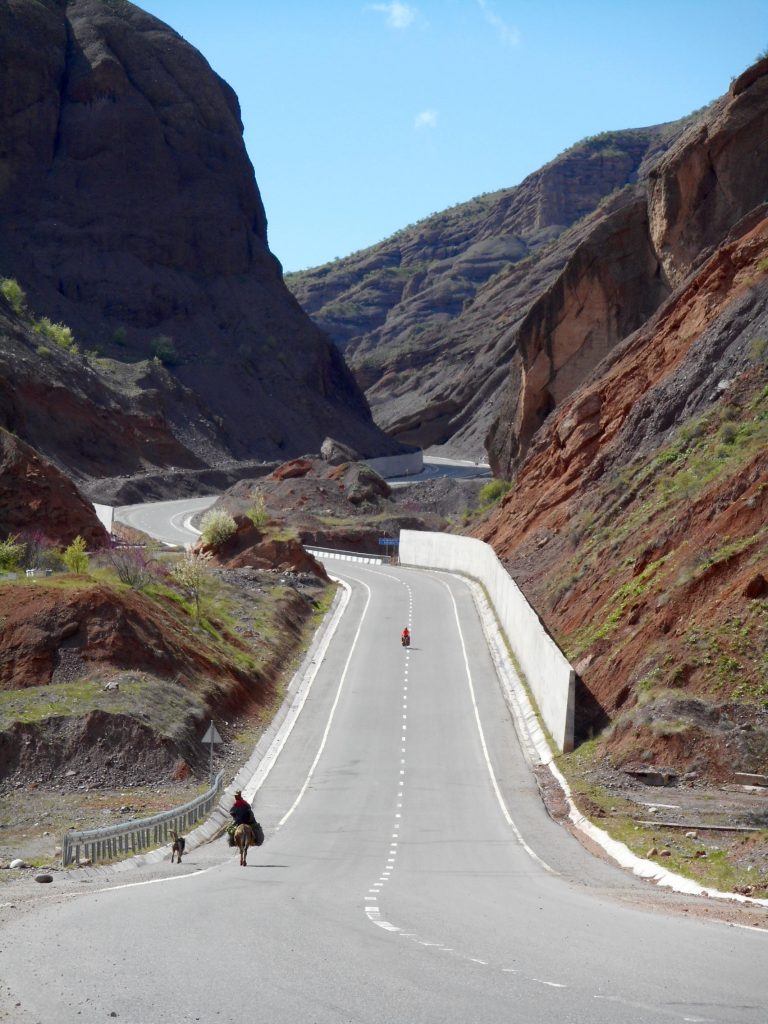 We had been literally training and preparing for this for years. The Pamir Highway ranks in the top places to be on a bike on most lists and yet it remains, somehow, a pretty exotic destination. Although many cyclists undergo this epic route every year and information is ready available on the World Wide Web, we were there for a month and we didn’t bump into many other two-wheelers. Furthermore, most of them are travelling light. Like Pierre, a French bikepacker on a 2 week holiday who makes our fully loaded bikes look like container ships.
We had been literally training and preparing for this for years. The Pamir Highway ranks in the top places to be on a bike on most lists and yet it remains, somehow, a pretty exotic destination. Although many cyclists undergo this epic route every year and information is ready available on the World Wide Web, we were there for a month and we didn’t bump into many other two-wheelers. Furthermore, most of them are travelling light. Like Pierre, a French bikepacker on a 2 week holiday who makes our fully loaded bikes look like container ships.
For those at the back, The Pamir Highway was built long ago by the Russian Empire (yes, that long ago) to supply their southernmost border with troops and stop the advance of the Brits which were quickly spreading north from India and threatened to flood Central Asia with unwanted competition. This border just happens to be surrounded by countless 12 and 13 thousand feet peaks between modern days Tajikistan and Afghanistan.
History and geography are nice but what this translates into is quite simple; almost a thousand miles of river bends, deep valleys and open plateau, far from civilization and only breathtaking views with which to waste time and go crazy with the camera. Well, at least this is what we thought and it’s definitely the idea one is likely to get when reading blogs about it, but the reality is not quite so. Before getting into the specifics though, let me take you back a little.
Admittedly, if I had to plan a trip to this part of the world, I probably wouldn’t. The Pamir is renowned for being the second highest in the world and although cycling is by far one of my favourite activities on this planet, the fact alone that several hundred miles of this route are spent above 10.000 feet leaves you wondering about the preparation involved for such endeavour. And, to be fair, there are other perfectly cyclable mountain ranges a lot closer to home and a lot more accessible.
However, while planning our longhaul trip to Singapore, we realised that we would stroll pass the vicinity of this epic road. The decision to tackle it was taken without a moment hesitation. We told ourselves that by the time we’d get there we will definitely be fit and experienced enough and that it might be a slow climb up the 12.000 feet passes, but that it wouldn’t be the same if we came all the way to Tajikistan and not even try it. What is there to lose?
So, as time and kilometres went by, we had to overcome many problems, most of them involving Visas and other red tape issues most travellers face when outside of their homeland, but The Pamir was always on our minds. Every climb was a small training exercise and at the end of every hard day we’d tell each other that The Pamir would probably be a similar ordeal.
Once in Dushambe, the capital of Tajikistan, there was only one thing left to do; climb. Well, actually, that’s a lie, we spent most of our time there looking for suitable sleeping bags since ours had served us very well up to now but with night temperatures well below freezing even in May, we needed to find a good alternative or risk hyperthermia every time we set up camp.
So, finally, off we were! The first few days out of Dushambe are spent in open countryside, going up and down fluorescent green rolling hills and little towns where everything is ready available,especially friendly locals. Once we even had the pleasure of being hosted by the owner of a public bathhouse which actually had a sauna! Just to make this little anecdote a little better, we had been sharing the roads with two Swedes, who practically live in those things, and it had been a cold and rainy day; so you can imagine how it felt like an heavenly gift!
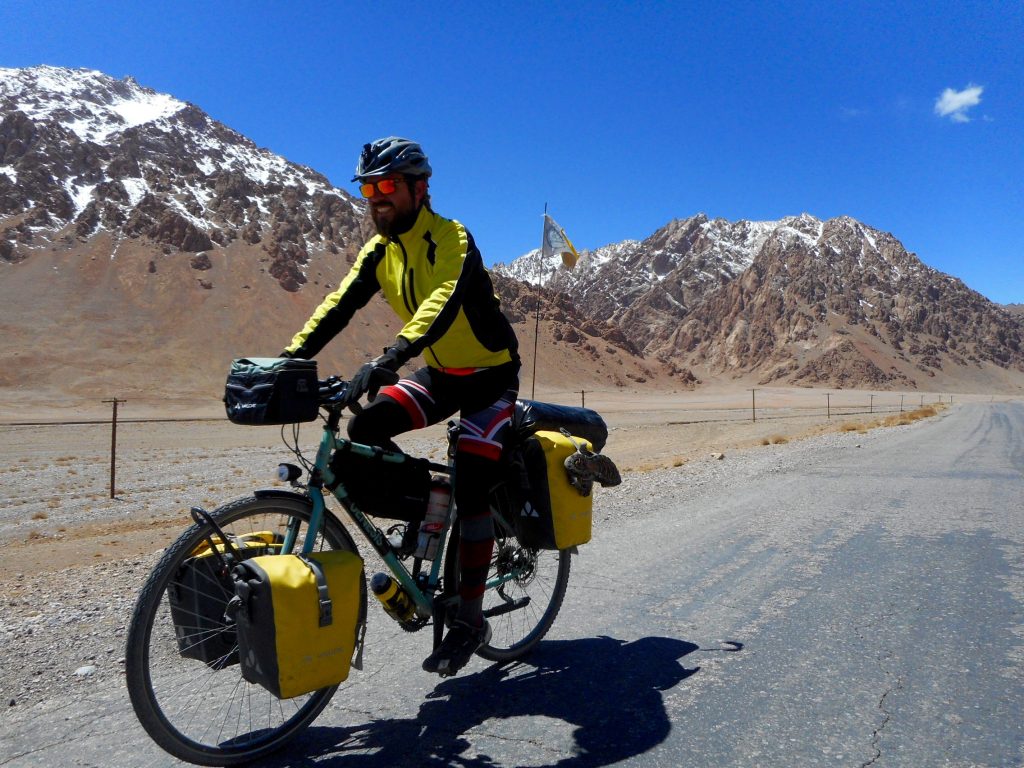 The road which connects the capital with the first town on The Pamir is wide enough to offer a safe shoulder on which to cycle and is incredibly well kept and sealed. Then, after the first real mountain pass, the scenery changes drastically and after a long, steep downhill between beautiful mountains and a river 500 feet below you, the valley opens up and you are, at last, plunged into another world.
The road which connects the capital with the first town on The Pamir is wide enough to offer a safe shoulder on which to cycle and is incredibly well kept and sealed. Then, after the first real mountain pass, the scenery changes drastically and after a long, steep downhill between beautiful mountains and a river 500 feet below you, the valley opens up and you are, at last, plunged into another world.
Anyone who has ever been to the Alps or similar knows what I’m talking about; naturally, the first thing you notice are the huge peeks just ahead. You’re at 3000 feet so how high are they? You slow down just a little and take a second to study the enormous, green valley and you immediately remember that you’ve analysed the map various times before and that on the other side of the river is Afghanistan. That little village on the opposide shore is that country you’ve heard so much about on the news! And then, as a good cyclist, you also remember that what had marked you the most about that map was the fact that this is also the place where those hairpins were and, undoubtedly, as you get closer to the guardrail, you see it many many feet below you; fun at it’s purest.
It had been an overall difficult, hot and sticky day but we found a wild camping place with a fountain so, after a cold shower and a warm dinner, we tooked in for the night and dreamt of what else the Pamir would have in store for us.
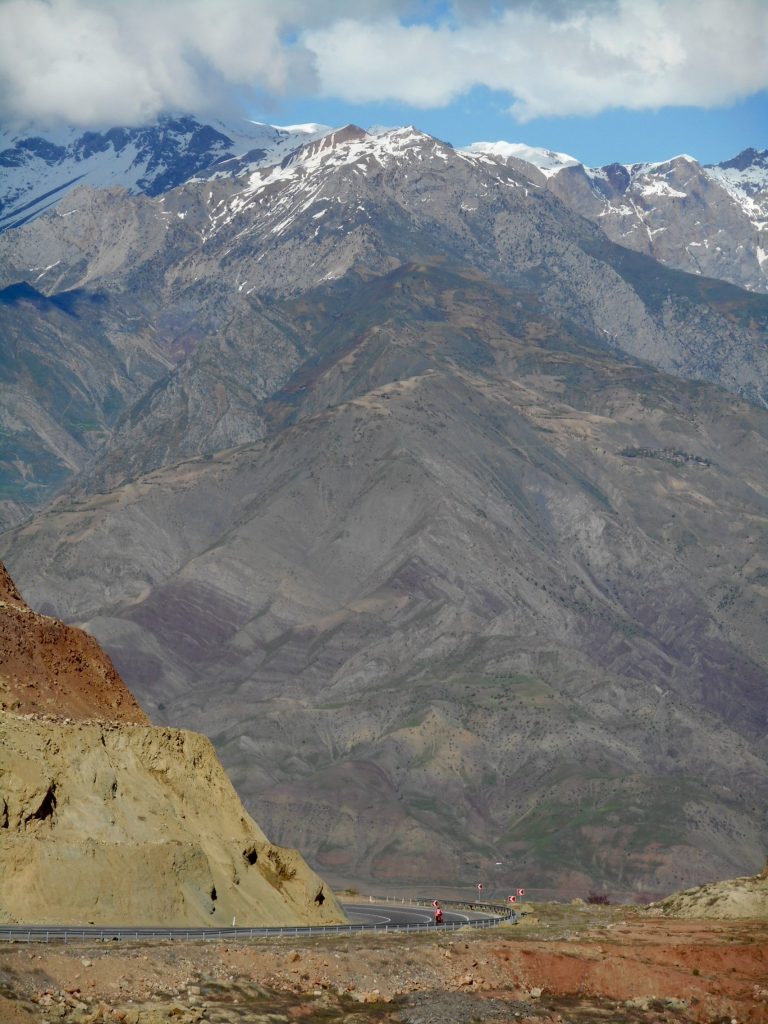 This quickly brings us to a very important conversation topic regarding the Pamir; water. Maybe in summer the situation is different high up in the plateau, that would explain why tons of cyclists insist on climbing up there with several bottles strapped to their panniers, but in Spring, good H2O is readly available everywhere. Even on the plateau you can just ask any of the very few houses scattered here and there and the dweller will happily supply you straight from their stash or well.
This quickly brings us to a very important conversation topic regarding the Pamir; water. Maybe in summer the situation is different high up in the plateau, that would explain why tons of cyclists insist on climbing up there with several bottles strapped to their panniers, but in Spring, good H2O is readly available everywhere. Even on the plateau you can just ask any of the very few houses scattered here and there and the dweller will happily supply you straight from their stash or well.
Back to the road. Pedaling along the Panj River, you slowly wind up, following the slender valley and experiencing different levels of road surfaces but always along the same magnificent landscape, one which has been carved over million of years by the elements and which has left a magnificent scenery where you can always hear the rumble of the water and very regularly see Afghan villages on the other side. Sometimes they are so close you can actually see inside the houses and shout “hello” back to the kids who are waving at you from that world so far yet so close.
One evening, we found a great camping spot sheltered from the wind but, maybe, a little too close to a village which laid just on the other shore of the river. Just as we were about to wash up and wrap up for the night, a group of Tajik soldiers approached us and suggested we may want to move a few hundred yards in any direction to avoid said closeness. Obviously, at 10pm the last thing anyone wants to do is move camp, so we politely insisted to stay and after a little while they agreed but only if two sentinels stayed with us, at an appropriate distance, and kept guard all night. We offered coffee, they denied. In hindsight, knowing what I knew at the time about Tajik customs, I should have gone for black tea.
 This anecdote also served the double purpose of bringing about the topic of security along the almost 200 miles bordering section which Tajikistan shares with its controversial neighbour. In 2018 this area was tragically hit by a terrorist attack against a group of cyclists and the government has taken very heavy actions to show the whole world that that shouldn’t stop mountain lovers from experiencing the Pamir. And so this stretch is constantly being patrolled and surveyed by the army and, if I may say so, they are rather friendly with tourists and even more so with cyclists (we do deserve special treatment!). At any point did we, or anyone else we spoke to, feel in danger while there. Au contraire, given the recent events, we got the feeling that locals were trying even harder to show their best side.
This anecdote also served the double purpose of bringing about the topic of security along the almost 200 miles bordering section which Tajikistan shares with its controversial neighbour. In 2018 this area was tragically hit by a terrorist attack against a group of cyclists and the government has taken very heavy actions to show the whole world that that shouldn’t stop mountain lovers from experiencing the Pamir. And so this stretch is constantly being patrolled and surveyed by the army and, if I may say so, they are rather friendly with tourists and even more so with cyclists (we do deserve special treatment!). At any point did we, or anyone else we spoke to, feel in danger while there. Au contraire, given the recent events, we got the feeling that locals were trying even harder to show their best side.
Having said this, it is a quite unique experience to be able to discretly observe a country while in the absolute safety of another and it’s an activity which we rather enjoyed. In two small cities along the way, and only on special given days, it’s also possible to attend markets where Tajiks and Afghans gather in unique free zones and exchange not only goods but also time together.
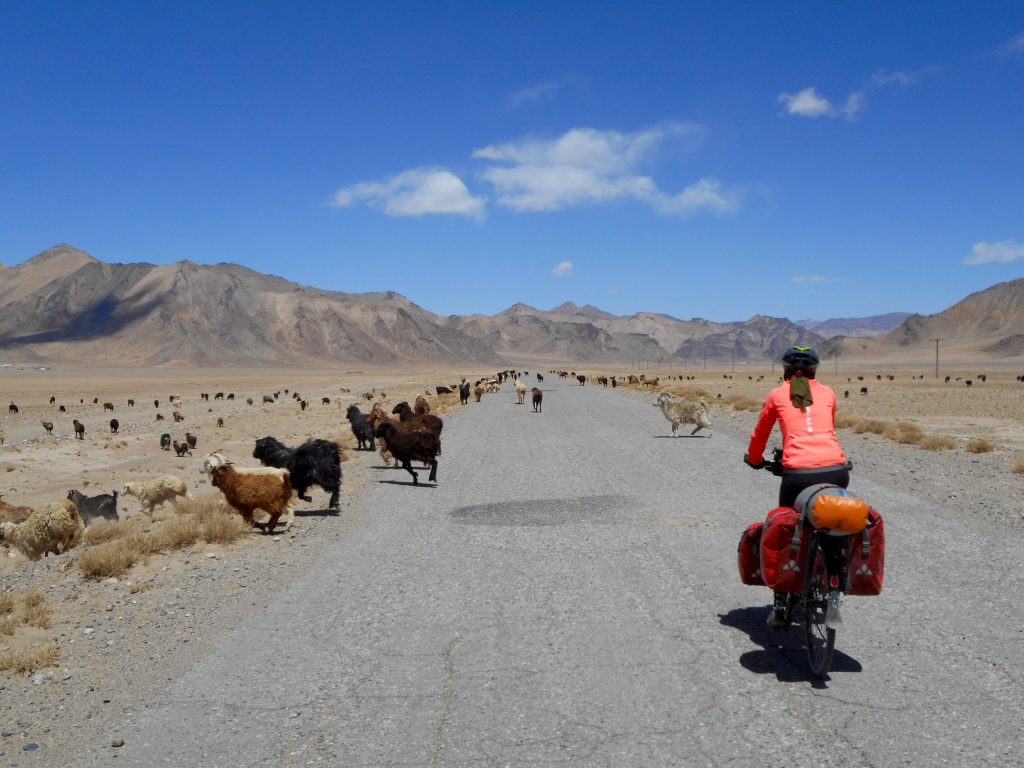 The Panj joyfully escorts you all the way to Khorog where you should grasp the chance to stock up on supplies and, why not, spalsh out in a restaurant with more than one dish on its menu. As soon as you leave its hustle and bustle, the road slowly takes you higher and further away from towns and through villages, then settlements, until you arrive to Jerundy with its hot water springs renouned for bringing health to your joints and muscles; unmissable in any time of the year and an absolute during the cold months (i.e. from October to May). After all, how many times does life offer you the chance to stay in a Sovietic Sanitarium style facility?
The Panj joyfully escorts you all the way to Khorog where you should grasp the chance to stock up on supplies and, why not, spalsh out in a restaurant with more than one dish on its menu. As soon as you leave its hustle and bustle, the road slowly takes you higher and further away from towns and through villages, then settlements, until you arrive to Jerundy with its hot water springs renouned for bringing health to your joints and muscles; unmissable in any time of the year and an absolute during the cold months (i.e. from October to May). After all, how many times does life offer you the chance to stay in a Sovietic Sanitarium style facility?
Without any doubts though, the part of the Pamir which we loved above all is the one which is above all the rest… we’re talking altitude now! At this point you understand why most people tend to concentrate their efforts on this section.
Not having any previous practice at this height, we weren’t really sure what to expect but the result is far better than we thought; most peaks are still snow-capped but the roads are clear and so is most of the land around us. We had never thought that nothingness could be so magical; tranquility is queen and wild camping is as easy as pointing with your finger and saying “there”!
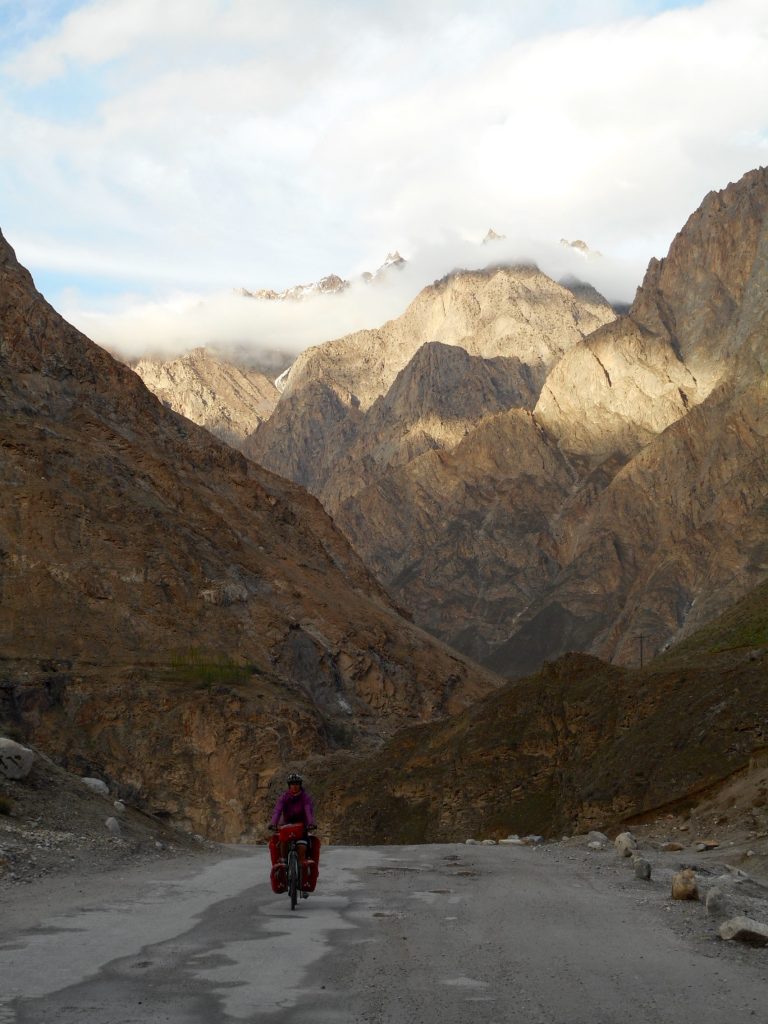 This plateau is basically just a series of huge valleys, each with its own peculiarities and colours. At every turn you are astonished by the latest mouth-opening view or the surprise of either a short climb to warm you up a little or a pleasant descent with a nice little bend, if you’re lucky.
This plateau is basically just a series of huge valleys, each with its own peculiarities and colours. At every turn you are astonished by the latest mouth-opening view or the surprise of either a short climb to warm you up a little or a pleasant descent with a nice little bend, if you’re lucky.
Sceneries come and sceneries go on the Pamir but, without any doubt, the element which remains the most constant along the way are Tajiks themselves. 7 out of 10 times you will feel like you’re alone until you hit any type of settlement, big or tiny as it may be, and then the human contact is inevitable. Level 1 is kids waiting for you by the roadside, waving, shouting “hello” or simply looking at you astonished. Next levels include being invited for tea and biscuits, lunch or dinner and even a bed or a safe place to set up the tent (locals consider the Pamir to be highly dangerous).
It’s a common feeling to cherish the time spent in this unforgettable mountain chain for as long as one draws breath where a great cycling challenge merges with amazing views, the chance to immerse in a local culture and also share unique moments with its inhabitants and go back home with lots more than just a couple of SD Cards full of pictures and an applauding Strava account.




